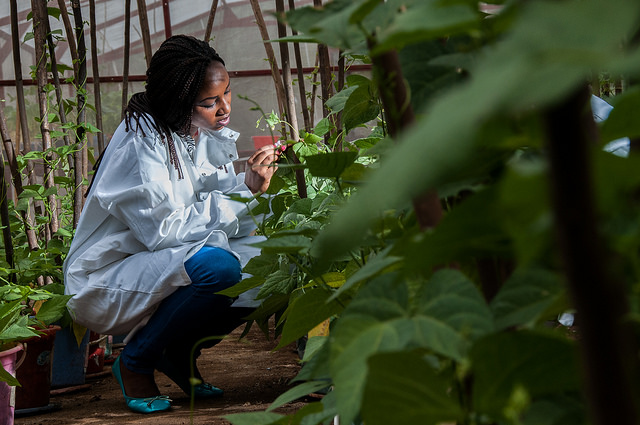Researchers attending the Pan-African Grain Legume and World Cowpea Conference in Livingstone, Zambia, this week have expressed concern at the lack of funding of research in pulses. Annual funding in pulse research, which covers 13 different crops, hovers at $175m, yet crops such as corn receive billions in investments.
For more information see press release below issued by the Global Pulse Confederation.
Global survey shows shortfall in research investment in pulses
– Food Security and Agricultural Sustainability Affected –
LIVINGSTONE, ZAMBIA, March 1, 2016: A new global survey among leading agricultural research institutions and personnel shows a concern that the current level of research funding into pulses – the edible dried seeds of legume crops, such as lentils, dry peas, chickpeas and beans – is too low and this may be handicapping efforts to improve food security and agricultural sustainability.
The ‘Global Pulse Productivity & Sustainability Survey’ suggests that annual investment hovers at only $175m per annum for the 13 crops in the pulse category. Billions are invested into other crops such as corn.
“Bottom line: we need a 10-fold increase in pulse research funding,” says Huseyin Arslan, President of the Global Pulse Confederation, which commissioned the survey. “With over 800 million people suffering from acute or chronic undernourishment, increasing pulse research is vital. We can only meet the world’s protein needs with better varieties of chickpeas, peas, beans, and lentils.”
This relative lack of investment may be one of the reasons why global pulse production has remained relatively stagnant in yield per acre, acres planted and total volumes, especially when compared to cereals and oilseeds. Given the potential for pulses to play a significant role in delivering against the UN’s new Sustainable Development Goals – especially Zero Hunger, Good Health & Wellbeing and Life on land – this lack of investment in research is a concern to the experts surveyed.
“Investments in pulses research have the potential for significant agricultural impact. The high nutritional value and climate resilience traits of pulses are well established to fight the global challenge of hidden hunger, poverty and environmental degradation, especially for the vulnerable populations of sub-Saharan Africa and Asia,” says Shoba Sivasankar, Director, CGIAR Research Program on Grain Legumes.
The survey maps, for the first time, many important national initiatives and international centres of excellence like CGIAR, a global research partnership, and ‘stalwart’ funders such as USAID and the Gates Foundation.
“Even with the limited funding supporting pulses research, several CGIAR Centers including ICARDA, ICRISAT, CIAT and IITA have developed many improved varieties and technologies to promote pulses production but these need to find their way to farmers’ fields,” said the Director General of ICARDA Dr. Mahmoud Solh. “Part of the reason for the limited expansion of pulses production is the high subsidies given by Governments to cereals at the expense of pulses. Thus, farmers prefer to grow cereals although pulses are becoming now cash crops in developing countries. India should be commended for being the first country giving subsidies now to pulses also which is expected to change the picture”.
It also highlights the geographical areas of decline, such as Europe, where despite a long tradition of pulse crop consumption and a ‘good general knowledge of the benefits of pulse crops to rotation’, there has been ‘increasing concern in the European agricultural community over the decrease in agricultural interest in pulse crops’ and a decline in research funding.
The survey shows a broad consensus on what research priorities should be. “With investment in crop improvement and agronomy research, pulses can be made resilient to climate change as well as diversify income sources for farmers. Focused research efforts creating expanded value-added marketplace for pulses will generate new market opportunities for farmers to make farmers prosperous as well as modernize our food system to become more sustainable, equitable and nutritious,” says David Bergvinson, Director General, International Crop Research Institute for the Semi-Arid Tropics.
“In addition to governments and funders stepping up their commitments to research, we need a 10 year strategy on pulse research to ensure there is sharp focus in the spending of these dollars,” adds Arslan.
The survey is the latest in a series of research projects, symposiums and conferences being conducted under the banner of the International Year of Pulses.
The United Nations has designated 2016 the International Year of Pulses to raise discussion of the role this crop plays in human and animal nutrition, its current and potential productivity and its contribution to sustainable agriculture.

